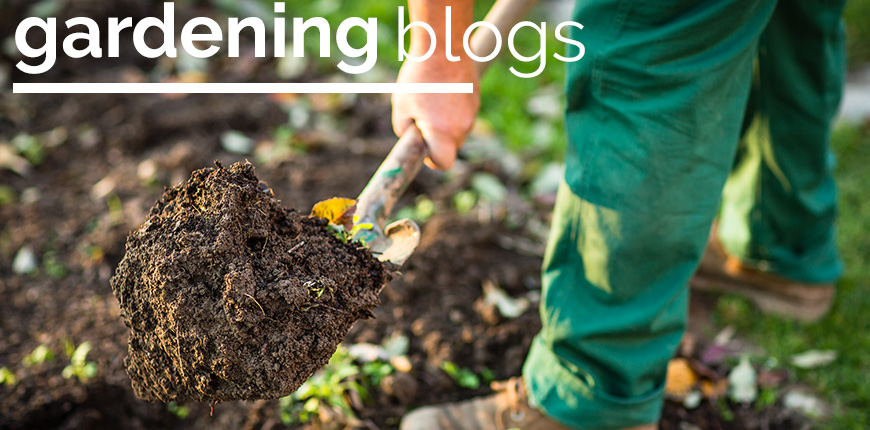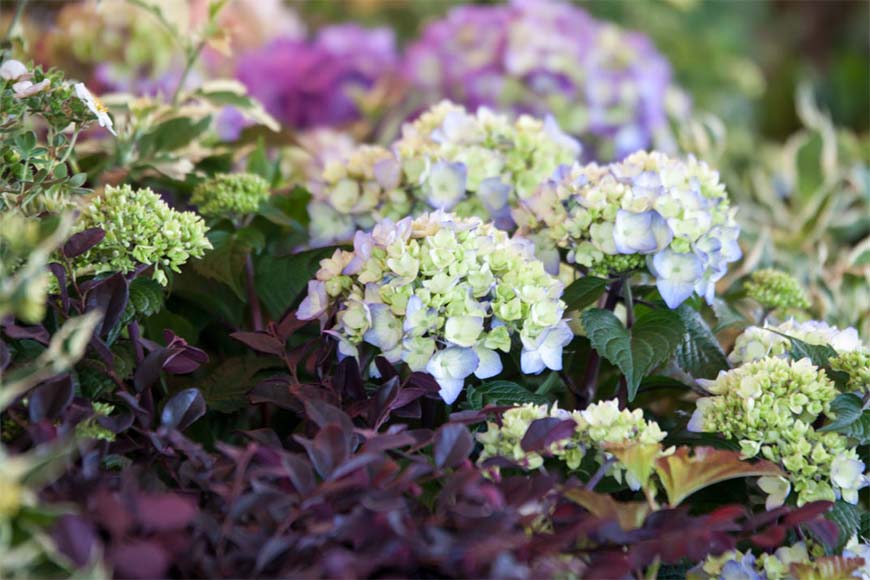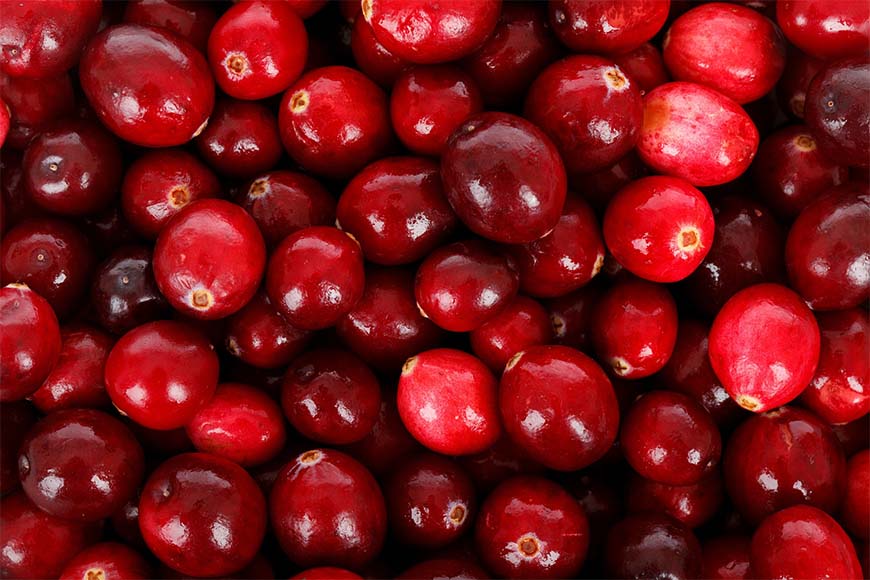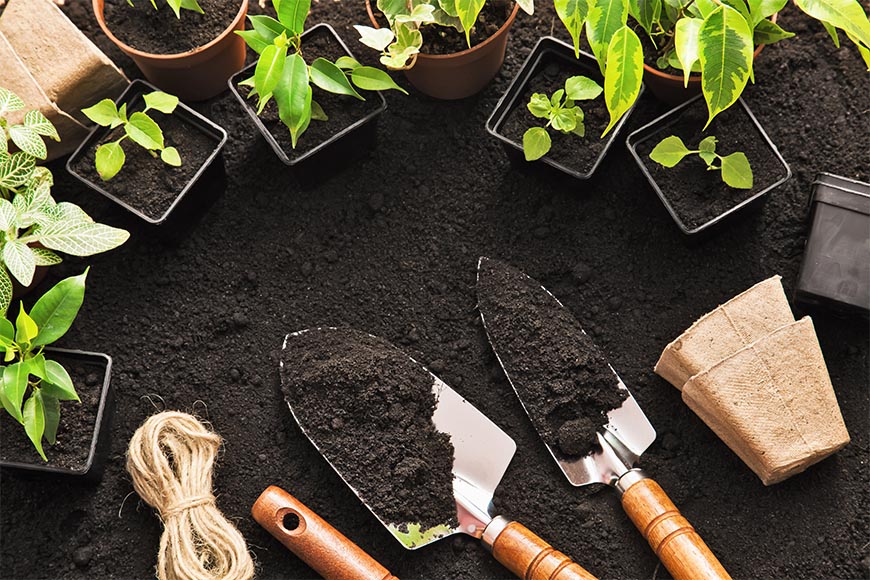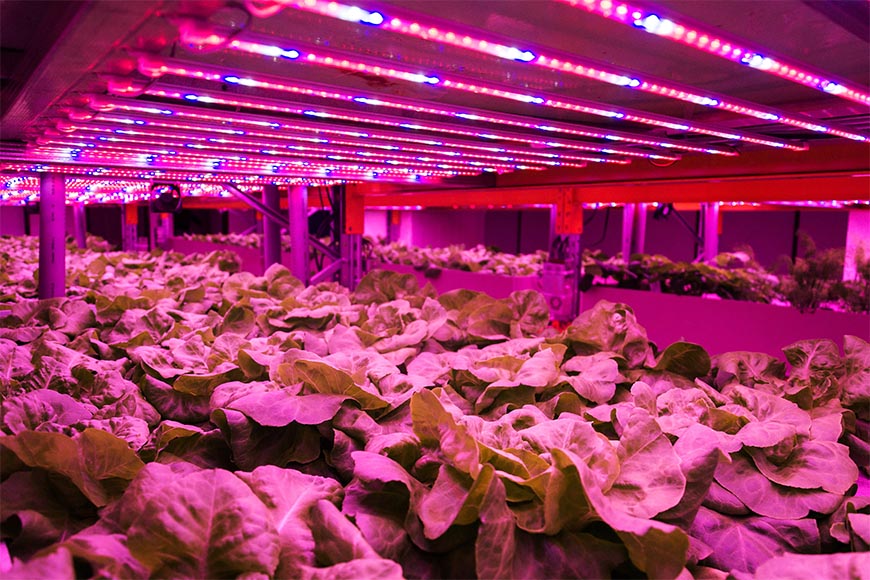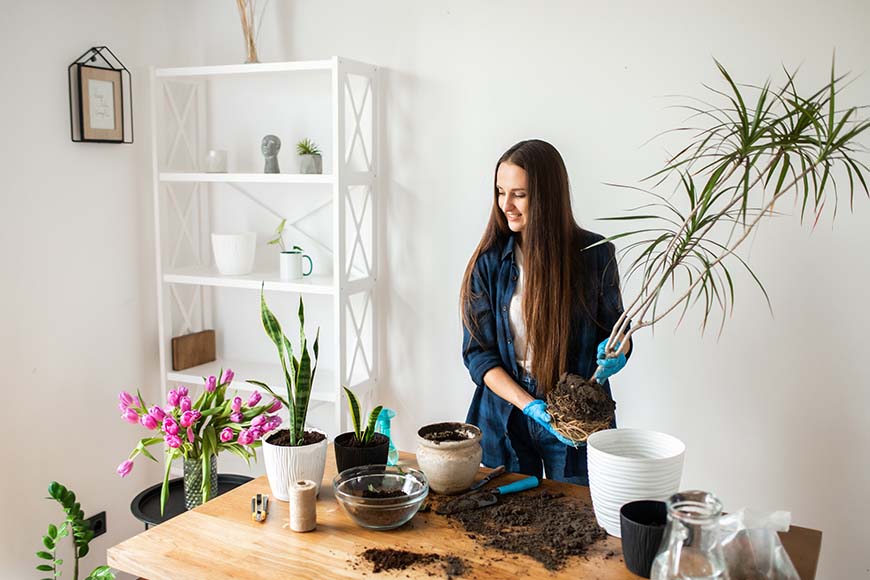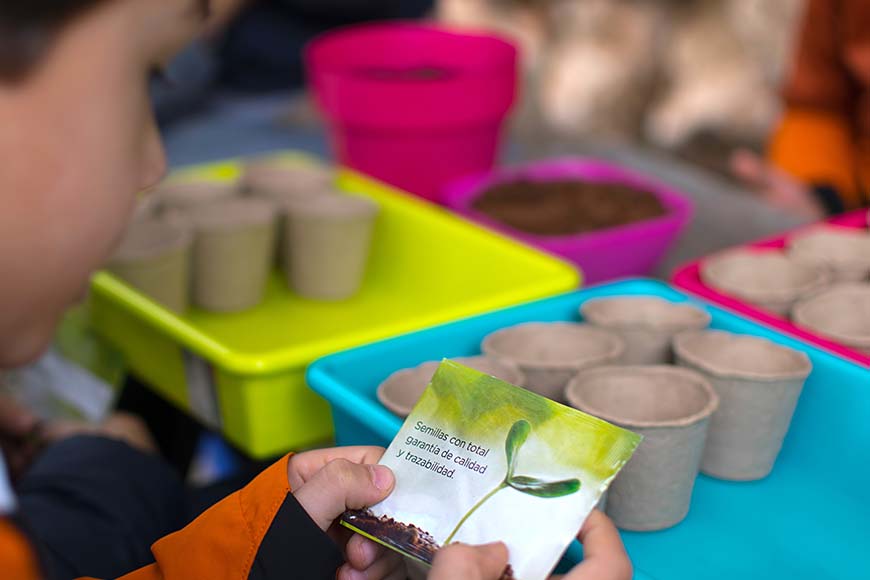There about 70 species of Hydrangeas and over 500 cultivars, which are split into many different groups, the two groups gardeners are most familiar with are Mopheads Hydrangea shrubs and Lacecaps Hydrangea shrubs. The Mophead Hydrangea flowers are what we are more familiar with when we think of Hydrangea shrubs.
The Mophead Hydrangea flowers are the big showy snowballs of flowers, whereas, the Lacecap Hydrangeas are much less showy, usually flat in appearance. Both are apart of the bigleaf hydrangea variety (Hydrangea macrophylla), which can reach a height of 8 feet tall. Mophead Hydrangea flowers can vary in color depending on the soil pH.
Hydrangeas are going to perform best in locations that get early morning sun and dapples of light throughout the day. Avoid garden locations that are hot and dry will be beneficial for optimum growth and health. If these conditions are unavoidable add plenty of compost and mulch to

